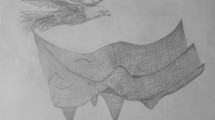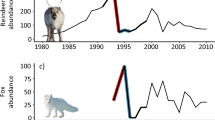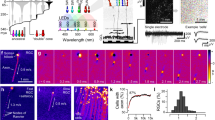Abstract
IN all the European ducks, geese, and swans, and in certain game birds, there is a remarkable feature about the structure of the primary feathers that seems to be hitherto undescribed. The under surface of a feather from such a bird bears a distinct glistening “mirror” occupying that portion of the web adjoining the rhachis. It is quite visible to the unaided eye in any position of light, and may be readily detected by the finger-tip. A closer examination shows this area to consist of a series of narrow silvery (sometimes golden or brassy) membranes each closely overlapping the next distal barb. For illustration I have chosen the fourth primary of an adult Bewick's swan. In Fig. A the glistening area is left unshaded; in Fig. B a single barb is figured, with its membrane; Fig. C shows a portion of the rhachis with the web cut across to show the barbs with their membranes in section; Fig. D gives in transverse section four barbs with the curved membranes. This will be rendered clearer by a reference to the fifth diagram, which figures the barbs on a normal feather taken from a cormorant. In this bird the membranes are wanting.
This is a preview of subscription content, access via your institution
Access options
Subscribe to this journal
Receive 51 print issues and online access
$199.00 per year
only $3.90 per issue
Buy this article
- Purchase on SpringerLink
- Instant access to full article PDF
Prices may be subject to local taxes which are calculated during checkout
Similar content being viewed by others
Author information
Authors and Affiliations
Rights and permissions
About this article
Cite this article
STUBBS, F. An Undescribed Feather Element. Nature 84, 329 (1910). https://doi.org/10.1038/084329a0
Issue date:
DOI: https://doi.org/10.1038/084329a0



